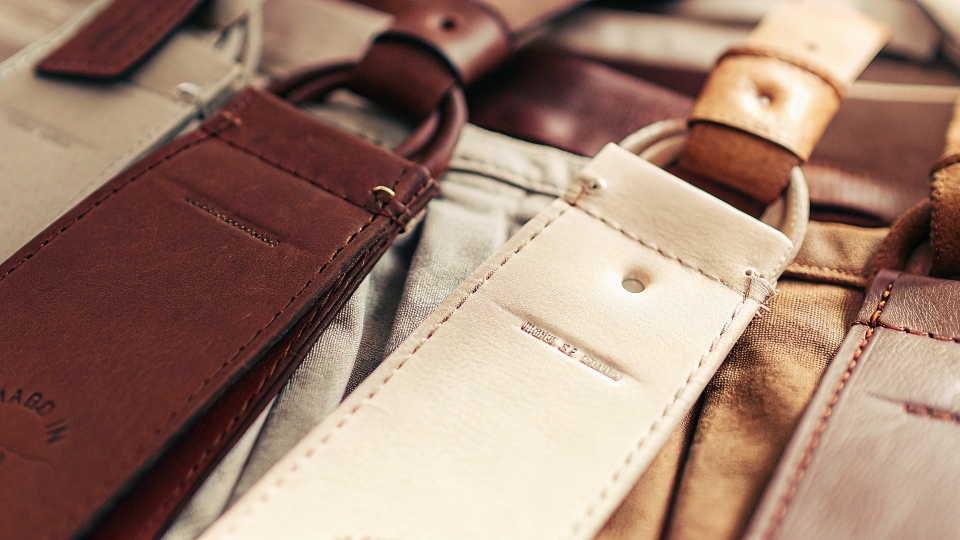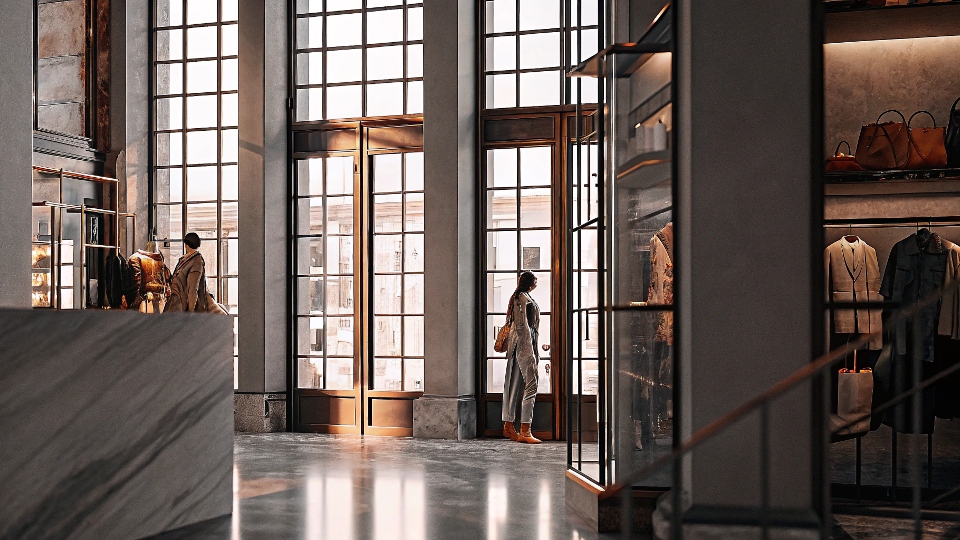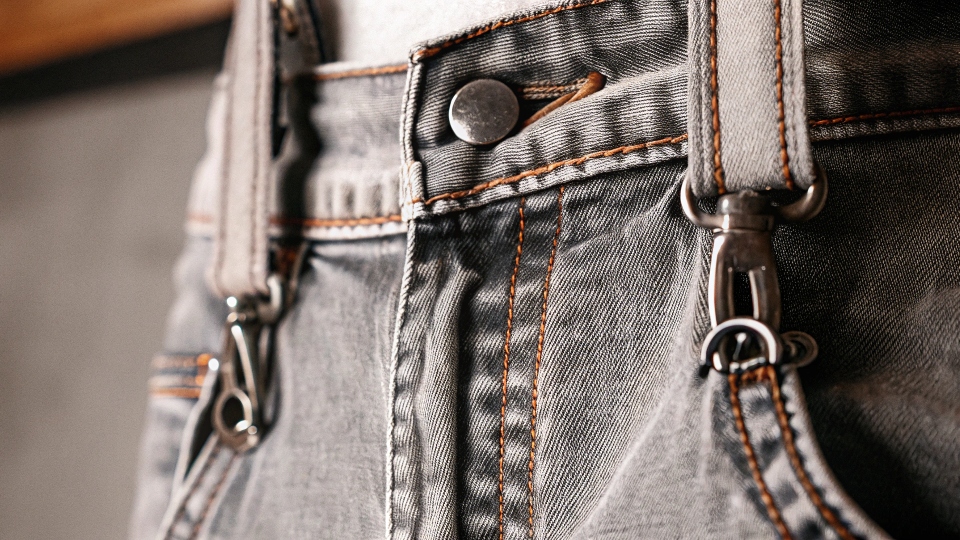You see the iconic red triangle logo everywhere, a symbol of fashion for decades. But when you stop to think about it, you realize you have no idea who actually makes the jeans. This mystery makes it hard to understand the brand's quality and place in the world.
Guess designs its jeans in-house but does not own its factories. It sends detailed design specifications1 to a global network of independent, third-party manufacturers who produce the garments. This outsourcing model is standard for most major global apparel brands today.
This decentralized approach is how almost all big brands operate now, but it's a huge shift from their origins. I remember in the 90s, when Guess was primarily a US-based powerhouse2. They did things very differently.They would buy the fabric and cut all the garments in their own massive facility just outside of downtown Los Angeles.
They still used outside contractors for sewing and finishing to stay flexible with seasonal demand, but the core was much more centralized. Understanding this evolution from a hands-on LA operation to a global licensing and manufacturing network is the key to understanding the modern Guess brand and where your jeans actually come from.
Where are Guess jeans actually made?
You look at the tag on a pair of Guess jeans and it might say "Made in Mexico" or "Made in China." This leaves you wondering if there's a single origin or if it's a global free-for-all, making it hard to grasp the brand's identity.
While Guess is an American company with design headquarters in Los Angeles, its jeans are physically manufactured in many different countries. Key production hubs include China, Vietnam, Bangladesh, and Mexico3, with the specific location chosen based on factory expertise, cost, and speed to market.
A global brand like Guess operates a complex supply chain. The decision of where to make a specific style of jeans is a strategic one. As my insights show, they have design teams not just in LA but also in Europe and Asia, creating products specifically for those markets.
This means a pair of Guess jeans sold in Milan might be designed in Europe and produced in a factory in Turkey or a nearby country to get it into stores quickly. A pair sold in the US might be made in Mexico for the same reason—speed.
For massive production runs of core styles, they will likely use large, highly efficient factories in Asia, particularly in China and Vietnam, which have incredible infrastructure for denim production, including the complex washing and finishing that gives Guess its signature looks. It's a sophisticated system designed to get the right fashion product to the right market at the right time.
| Manufacturing Region | Primary Advantage | Typical Guess Product |
|---|---|---|
| Asia (China, Vietnam) | Scale, Expertise, Cost | High-volume core styles, complex denim washes. |
| Mexico | Speed to US Market | Trendy, fast-fashion items for North America. |
| Turkey / N. Africa | Speed to EU Market | Collections designed for the European market. |
Is Guess Jeans a luxury brand?
You see the glamorous ads, the celebrity faces, and the higher price tag than a department store brand. This makes you question its status. Is Guess a true luxury item, or is it something else entirely? The ambiguity is confusing.
No, Guess is not a true luxury brand; it is a "premium" or "accessible luxury" brand. It smartly positions itself above mass-market labels4 with trend-driven fashion and strong branding5, but it does not compete with high-fashion luxury houses like Gucci or Saint Laurent.
The term "luxury" is about more than just price. True luxury brands are built on exclusivity, extreme craftsmanship (often in-house), and a deep heritage. Guess operates on a different, very successful model. As a factory owner, I see the distinction clearly. Guess's business is built on four pillars: retail stores, wholesale accounts, e-commerce, and a massive licensing operation.
That licensing piece is key. They license the Guess name to other companies who produce things they don't specialize in, like watches, fragrances, and handbags. A true luxury brand would almost never do this; they control every product internally. Guess's strategy is about making a strong fashion statement accessible to a wide audience.
It creates a feeling of luxury and glamour through its marketing but uses a business model built for volume and accessibility. It's a premium brand that does an expert job of looking like a luxury one.
| Brand Tier | Price Point | Manufacturing Model | Core Focus |
|---|---|---|---|
| Mass-Market | $ | Outsourced, high-volume | Basics, value |
| Guess (Premium) | $$ | Outsourced, high-volume | Trends, branding, accessible fashion |
| True Luxury | $$$$ | Often in-house, limited run | Heritage, craftsmanship, exclusivity |
Are Guess jeans any good?
You remember the iconic, trend-setting Guess jeans from years ago and wonder if the quality holds up today. You hesitate to buy them, worried that the brand's global expansion might have come at the cost of the quality that made them famous.
Yes, Guess jeans are a good quality product for their price and market position. They offer durable construction and are experts at producing fashionable washes and fits. While not artisanal denim, they consistently deliver a reliable and stylish product.
"Good" is a relative term that depends on what you're looking for. A denim designer like Dean would demand selvedge denim and single-needle stitching. That is not what Guess aims for. Their version of "good" is about consistency and fashion replication on a massive scale. When they were cutting everything in Los Angeles, they had very direct control over the quality of the fabric and the cut.
Today, they manage quality through extremely detailed design specifications that are sent to their partner factories. They are experts at creating a specific look—that stone-washed, distressed, or colored denim—and ensuring it looks the same whether it's made in Mexico or Vietnam. The quality is in the fashion, the wash, and the fit.
The fabric and construction are solid and durable for everyday wear.You are buying a fashion garment6, not a piece of heritage workwear, and in that category, the quality is very good. They mastered the art of making a trendy jean that lasts.
Conclusion
Guess designs its iconic jeans in-house but outsources manufacturing to a global network of partners. It’s a quality premium brand, not a luxury house, delivering trend-focused fashion worldwide.
-
Understand how design specifications ensure quality across different factories. ↩
-
Discover the historical significance of US-based fashion brands. ↩
-
Get insights into the key regions for denim production and their advantages. ↩
-
Learn about the differences between mass-market and premium fashion brands. ↩
-
Discover the role of branding in shaping a fashion brand's identity. ↩
-
Learn about the distinctions between fashion-focused and heritage-focused clothing. ↩









